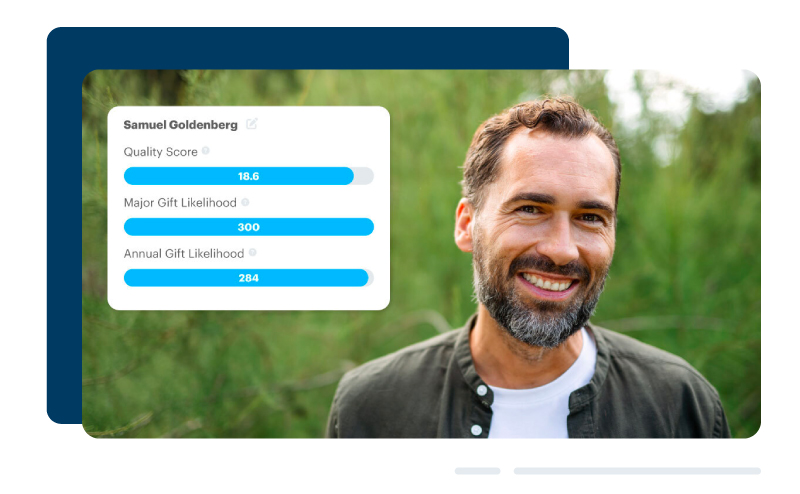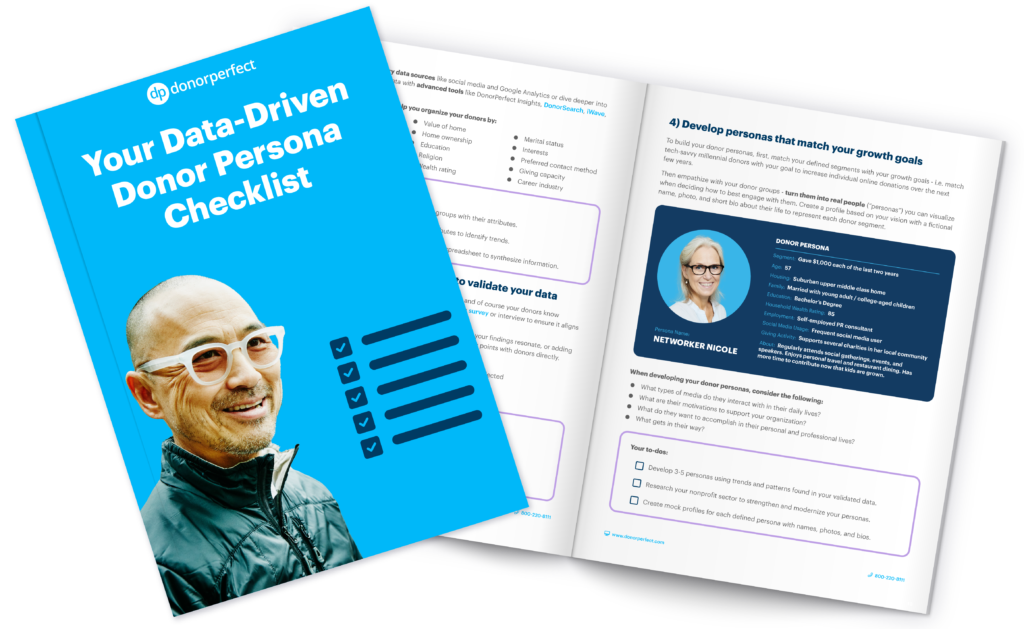Nonprofit Technology & Fundraising Blog
Subscribe to our mailing list

April 14, 2023 | Fundraising Events, Thanking Donors
There are plenty of incredible fundraisers out there who navigate nonprofit events with ease and grace (if this is you, major props). For the rest of us – especially if the thought of not having a specific event task or station to take charge of makes you queasy – here are some practical tips to make your event efforts more productive and enjoyable.
If you’re new to fundraising events or don’t regularly spend your evenings flitting between various galas and receptions, you probably haven’t had many opportunities to practice or learn what to do at a fundraising event. If you feel nervous or out-of-place, you’re not alone! It can help to remember that no matter who is attending your event or what their background is, everyone attending cares about your mission or they wouldn’t be there.
If you find yourself feeling awkward or you’re having a hard time networking with the people around you, you can always bring the conversation back to your mission. Why did you get involved? Do you have any behind-the-scenes stories you can comfortably share, especially if it demonstrates your supporters’ impact? No matter who you’re talking to, you can always lean on the one thing you’re just about guaranteed to have in common: the cause you both care about.
If your event is intended to raise a certain amount of money, you can use your fundraising goal as a way to initiate a connection with a person or group. For example, active language, like, “We’re just $1,000 away from hitting our goal tonight – would you like to buy a raffle ticket?” will likely have a much bigger impact than something more passive, such as, “Donations are welcome, but not expected.”
If your event networking goals are more stewardship-forward, it can be a great time to get to know your donors and what motivates them to support you. You can prepare by picking a few impact stories to keep in your back pocket, and help your donors see the tangible difference they make.
Simply asking outright, “What inspires you to give back?” can result in a wealth of information about your supporters that you might not necessarily learn from surveys or wealth screenings.

An important part of nonprofit networking is bringing like-minded people together. Prospect research tools can help you fill in the gaps regarding who knows who and who cares about what. We spoke with our integration partner, DonorSearch, about using prospect research to connect your current and future event attendees.
Past giving patterns help you determine which donors have the propensity and the affinity to give more to your nonprofit in the future. Inviting these donors to your fundraiser will allow them to mingle with one another and your staff, resulting in bigger and more frequent donations.
Let’s say Mr. Jones regularly donates to your nonprofit. After performing a prospect research screening, you discover that he serves on the board of directors of a similar nonprofit with Mrs. Smith. You can now reach out to Mrs. Smith or any of Mr. Jones’s other board members to invite them to your fundraising event, potentially raising more money and acquiring new donors.
Conducting a prospect screening can help you fill in the gaps in your donor database that could be helpful when throwing a fundraising event. You may be completely unaware that one of your donors regularly contributes to nonprofits whose causes closely align with yours. You can use this information to give donors more details on what you’re trying to accomplish.
Get more prospect research tips from experts at DonorSearch >>
If you have a pretty good handle on your donor database and basic info, you’ll be well-poised to serve as a connector at your nonprofit’s events. By keeping track of your donors’ personal details, like hobbies or travel plans, you can keep an ear out for things your supporters have in common and introduce them to each other. This has the dual benefit of helping you meet with as many people as you can throughout your event, while contributing to a real sense of community among your donors.
Not only does online fundraising software make it easy to access donor information on your mobile device, but it also makes it possible for donors to access their own information and ensure it’s correct and up-to-date.
For example, DonorPerfect’s integration partner GiveCloud offers Donor Portals that allow supporters to manage their account details, contribution history, and recurring payments themselves!
There’s nothing wrong with a few scripted lines, especially ones you feel comfortable with! It’s better to have entrance and exit plans in your back pocket than to feel stuck for too long with one conversational partner. Create and practice an introduction that feels good in your voice, and brainstorm some segues to move from one conversation to another.
If you’re struggling to keep your lines straight, prepare an event brief as if you were writing for a board member, then use it yourself. It helps strike a balance between feeling confident and prepared, without sounding over-rehearsed. Stick to the high-level stuff, and the conversation will flow more naturally.
It’s hard to shake hands (or look approachable) when your hands are full! If you find yourself carrying around a lot of event collateral, food, drinks, or business cards, try carrying a small bag, or pick a table or other spot in the venue you can treat as your home base.
And if you find yourself awkwardly standing around, look around for anyone else who looks like they’re in the same boat and try striking up a conversation. Chances are, they’ll be grateful someone stopped by to talk to them! Remember, everyone in the room is united for a common purpose.
Do you have other tips for feeling comfortable networking at fundraising events? We’d love to hear them! Share them in the comments below.
We’re here to help you learn more about donor prospect research as a tool for fundraising events – how it can give you a greater understanding of your current and future supporters, and what connects them to each other. You can try our free Data-Driven Donor Persona Checklist to start creating strategic groups within your constituency!

Follow us on social!